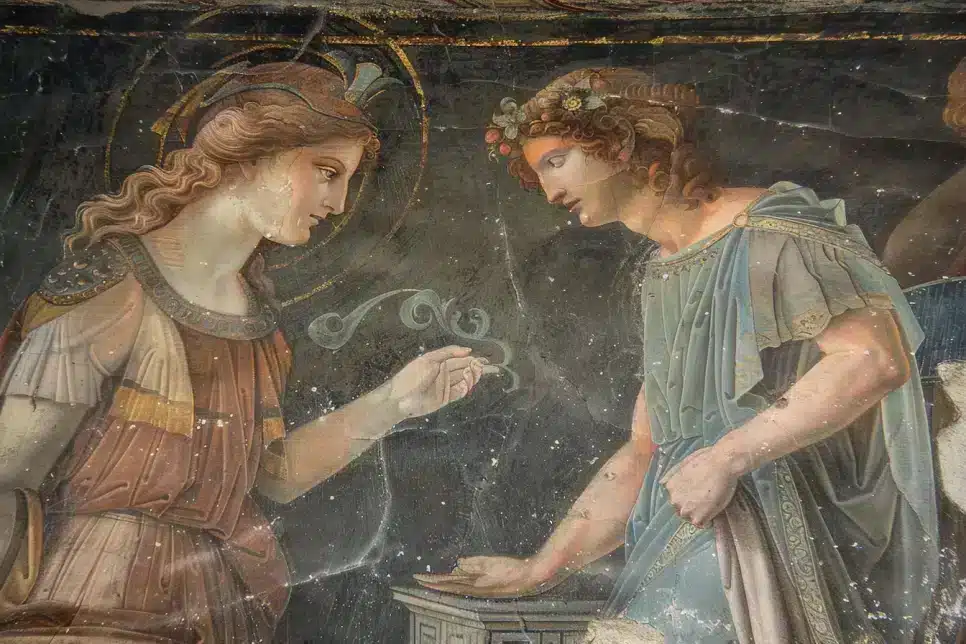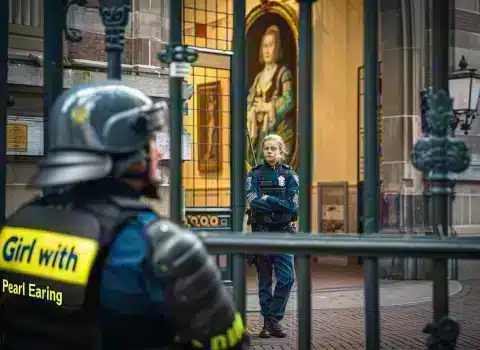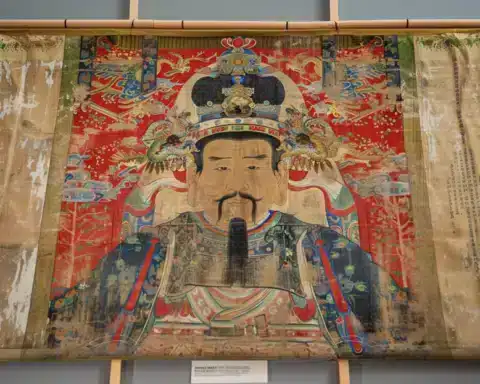Archaeologists excavating in Pompeii have recently uncovered an ancient banqueting hall adorned with remarkable frescoes depicting mythological tales from the Trojan War. This discovery at the well-preserved site of the ancient Greco-Roman city provides a vivid glimpse into the cultural and social life of its inhabitants before it was buried under volcanic ash in 79 C.E. The Archaeological Park of Pompeii announced that this dining area, with its elegantly black-painted walls, offered a unique backdrop for the banquets held there, combining artistic beauty with practical considerations.
Gabriel Zuchtriegel, director of the archaeological park, explains the choice of black for the walls: “The walls were painted black to prevent the smoke from the oil lamps being seen on the walls.” He adds, “People would meet to dine after sunset; the flickering light of the lamps made the images appear to move, especially after a few glasses of good Campanian wine.” Among the striking images is a fresco depicting a legendary meeting between Helen and Paris, which famously precipitated the Trojan War, and another illustrating the tragic figure of Cassandra, cursed never to be believed despite her prophetic gifts.
The hall measures approximately 49 feet by 20 feet and opens onto a courtyard, revealing the grand scale of these gatherings. Additional finds in the area include charcoal drawings of gladiators and symbolic decorations on the staircase leading to the upper floor, hinting at a complex, richly symbolic artistic tradition.
The excavation of this dining room is part of a larger ongoing project that has already revealed interconnected houses, a bakery, and other residential and public spaces. These findings continue to tell the stories of the 13,000 rooms distributed across the 1,070 homes in Pompeii, offering unparalleled insights into its residents’ daily lives and spiritual beliefs.
The continuous archaeological efforts in Pompeii unearth artifacts and structures and breathe life into the long-silent narratives of its ancient people. Each fresco, artifact, and structure discovered contributes to the broader understanding of Roman society and its complexities. As we delve deeper into these remnants of the past, we come closer to piecing together the vast tapestry of human history, ensuring that the voices of those long gone are not forgotten but celebrated in their full cultural richness.





